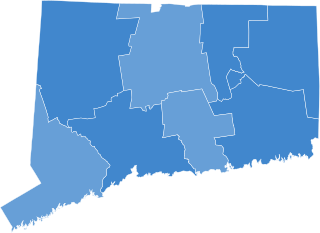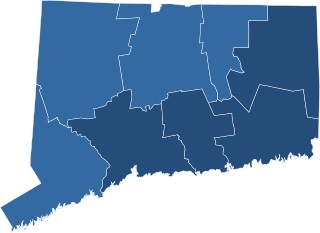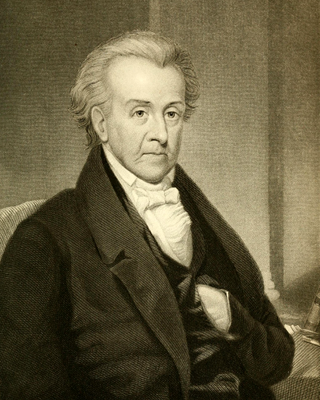The Toleration Party, also known as the Toleration-Republican Party and later the American Party or American Toleration and Reform Party, was a political party that dominated the political life of Connecticut from 1817 to 1827. The American name referred not to nativism or the later Know Nothing, which was also known as the American Party, but to the party's national orientation.

The 1914 United States Senate election in New York was held on November 3. Incumbent Republican Senator Elihu Root chose not to seek re-election. James Wolcott Wadsworth Jr. was elected to a succeed Root, defeating Democrat James Watson Gerard.

The 1831 Connecticut gubernatorial election was held on April 8, 1831. Incumbent acting governor and National Republican nominee John S. Peters was elected to a term in his own right after the resignation of his predecessor Gideon Tomlinson, defeating Anti-Masonic nominee Zalmon Storrs with 68.75% of the vote.

The 1827 Connecticut gubernatorial election was held on April 12, 1827. Former congressman, speaker and Democratic-Republican candidate Gideon Tomlinson defeated incumbent governor and Democratic-Republican candidate Oliver Wolcott Jr., winning with 56.71% of the vote.

The 1826 Connecticut gubernatorial election was held on April 13, 1826. Incumbent governor and Toleration Party candidate Oliver Wolcott Jr. defeated former senator and Federalist Party candidate David Daggett, winning with 56.77% of the vote.

The 1825 Connecticut gubernatorial election was held on April 14, 1825. Incumbent governor and Toleration Party candidate Oliver Wolcott Jr. defeated Federalist Party candidates former senator David Daggett, former delegate Nathan Smith and former congressman Timothy Pitkin, winning with 68.82% of the vote.

The 1824 Connecticut gubernatorial election was held on April 8, 1824. Incumbent governor and Toleration Party candidate Oliver Wolcott Jr. defeated former congressman and Federalist Party candidate Timothy Pitkin, winning with 88.81% of the vote.

The 1823 Connecticut gubernatorial election was held on April 10, 1823. Incumbent governor and Toleration Party candidate Oliver Wolcott Jr. won re-election with 88.96% of the vote.

The 1822 Connecticut gubernatorial election was held on April 11, 1822. Incumbent governor and Toleration Party candidate Oliver Wolcott Jr. defeated former congressman and Federalist Party candidate Zephaniah Swift, winning with 86.59% of the vote.

The 1821 Connecticut gubernatorial election was held on April 12, 1821. Incumbent governor and Toleration Party candidate Oliver Wolcott Jr. was re-elected, winning with 86.91% of the vote.

The 1819 Connecticut gubernatorial election was held on April 8, 1819. Incumbent governor and Democratic-Republican Party candidate Oliver Wolcott Jr. was re-elected, winning with 86.85% of the vote.

The 1818 Connecticut gubernatorial election was held on April 9, 1818. Incumbent governor and Toleration Party candidate Oliver Wolcott Jr. was re-elected, defeating congressman and Federalist Party candidate Timothy Pitkin with 86.32% of the vote.

The 1820 Vermont gubernatorial election for Governor of Vermont took place in September and October, and resulted in the election of Richard Skinner to a one-year term.

The 1820 New Hampshire gubernatorial election was held on March 14, 1820.

The 1808 New Hampshire gubernatorial election was held on March 8, 1808.

The 1807 New Hampshire gubernatorial election was held on March 10, 1807.

The 1806 New Hampshire gubernatorial election was held on March 11, 1806.

The 1816 Connecticut gubernatorial election was held on 11 April 1816 in order to elect the Governor of Connecticut. Incumbent Federalist Governor of Connecticut John Cotton Smith won re-election against Democratic-Republican nominee and former United States Secretary of the Treasury Oliver Wolcott Jr..

The 1817 Connecticut gubernatorial election was held on 10 April 1817 in order to elect the Governor of Connecticut. Incumbent Federalist Governor of Connecticut John Cotton Smith lost re-election against Democratic-Republican nominee and former United States Secretary of the Treasury Oliver Wolcott Jr.





















